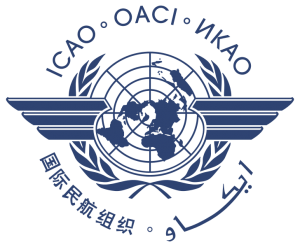 The International Civil Aviation Organization (ICAO), a specialized agency of the United Nations, announced a Request for Information (RFI) on UTM: traffic management systems for unmanned aircraft systems (UAS).
The International Civil Aviation Organization (ICAO), a specialized agency of the United Nations, announced a Request for Information (RFI) on UTM: traffic management systems for unmanned aircraft systems (UAS).
The announcement was made to attendees at the AUVSI Xponential 2017 conference. The agency is “soliciting proposals for a global framework for UTM ahead of its DRONE ENABLE UAS Industry Symposium, which will take place in Montreal, Canada in September,” says an AUVSI announcement.
Developing a UTM framework is a critical piece of drone integration into the NAS, and necessary before many countries – including the US – can fully allow widespread adoption of commercial drone applications like delivery and long-range missions. The issue has been a consideration in recent proposals that the US Air Traffic Control system be privatized, which some industry commentators have said could help push drone integration forward. While an undeniably complex problem without a quick solution, the FAA and NASA have been collaborating with industry to test elements of a UTM system in the US for several years, and claim progress that should see drone integration complete within the next few years.
ICAO is looking for a coordinated international solution, and a shared body of knowledge that can help all countries move forward. “ICAO recognizes that the challenge to integrating unmanned aircraft (UA) into national airspace will be facilitated by agreeing upon a globally harmonized, common framework,” says the RFI. “…Multiple States and regions have expressed interest in developing UTM to provide services for UAS operations, particularly in urban environments. A common agreement on the framework and core boundaries of UTM will facilitate harmonization between UTM systems globally and enable industry, including manufacturers, service providers and end users to grow safely and efficiently without disrupting the existing manned aviation system.”
The RFI identifies 3 prioritized elements of a UTM system:
a) registration system from which data is accessible in real time to allow remote identification and tracking of each UA, its operator/owner and location of the remote pilot/control station. To accommodate UA that are increasingly transported from one State to another for either recreational or professional use, this database should allow global access;
b) communications systems for control of the UA and for tracking all UA within the UTM area. The communications system used for tracking UA must be able to identify when a manned aircraft is entering UTM airspace and provide an acceptable level of protection between it and UA operating in the airspace. Furthermore, it must facilitate detection of potential collisions with other UA and with obstacles such that appropriate avoidance action can be taken; and
c) geofencing-like systems that will support automatic updates by national authorities on the 28 day aeronautical information regulation and control (AIRAC) cycle to prevent UA operation in sensitive security areas and restricted or danger areas such as near aerodromes.
Some manufacturers have been heavily invested in promoting their own technology solutions to these requirements. But while the US and other countries move forward on UTM solutions, the establishment – and acceptance – of global standards may help to smooth the way for the entire industry.

Miriam McNabb is the Editor-in-Chief of DRONELIFE and CEO of JobForDrones, a professional drone services marketplace, and a fascinated observer of the emerging drone industry and the regulatory environment for drones. Miriam has penned over 3,000 articles focused on the commercial drone space and is an international speaker and recognized figure in the industry. Miriam has a degree from the University of Chicago and over 20 years of experience in high tech sales and marketing for new technologies.
For drone industry consulting or writing, Email Miriam.
TWITTER:@spaldingbarker
Subscribe to DroneLife here.







[…] post UTM: The Search for a Global Solution appeared first on […]